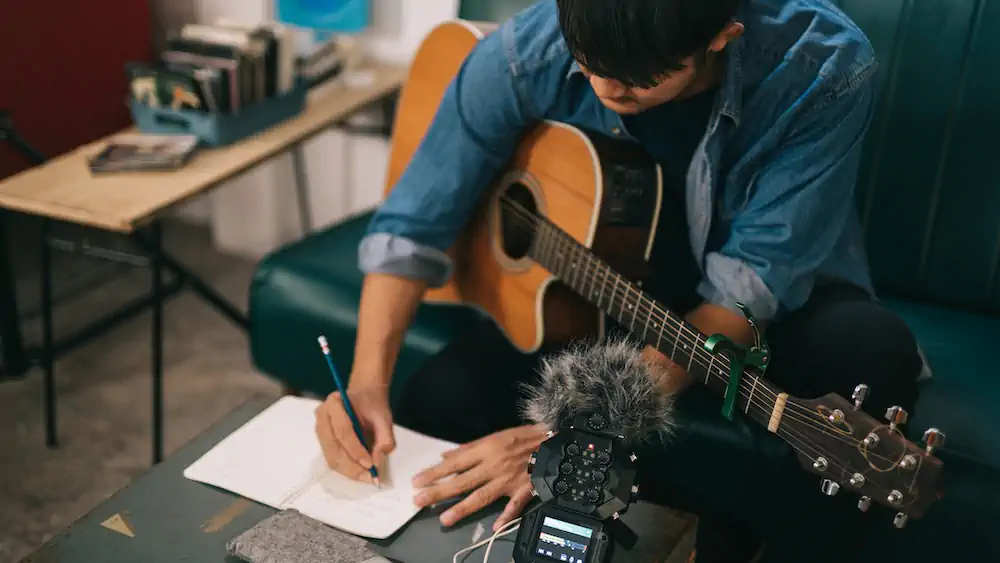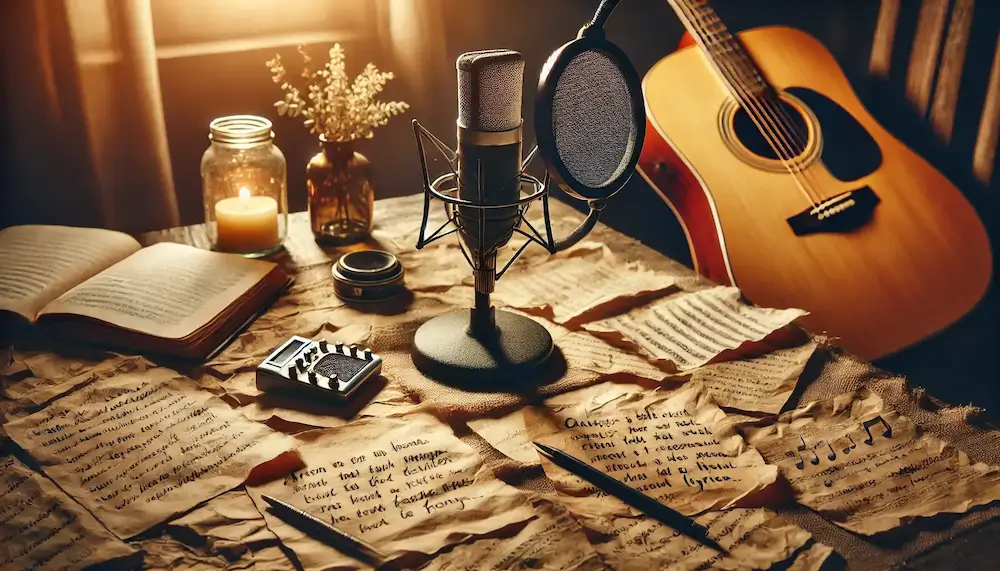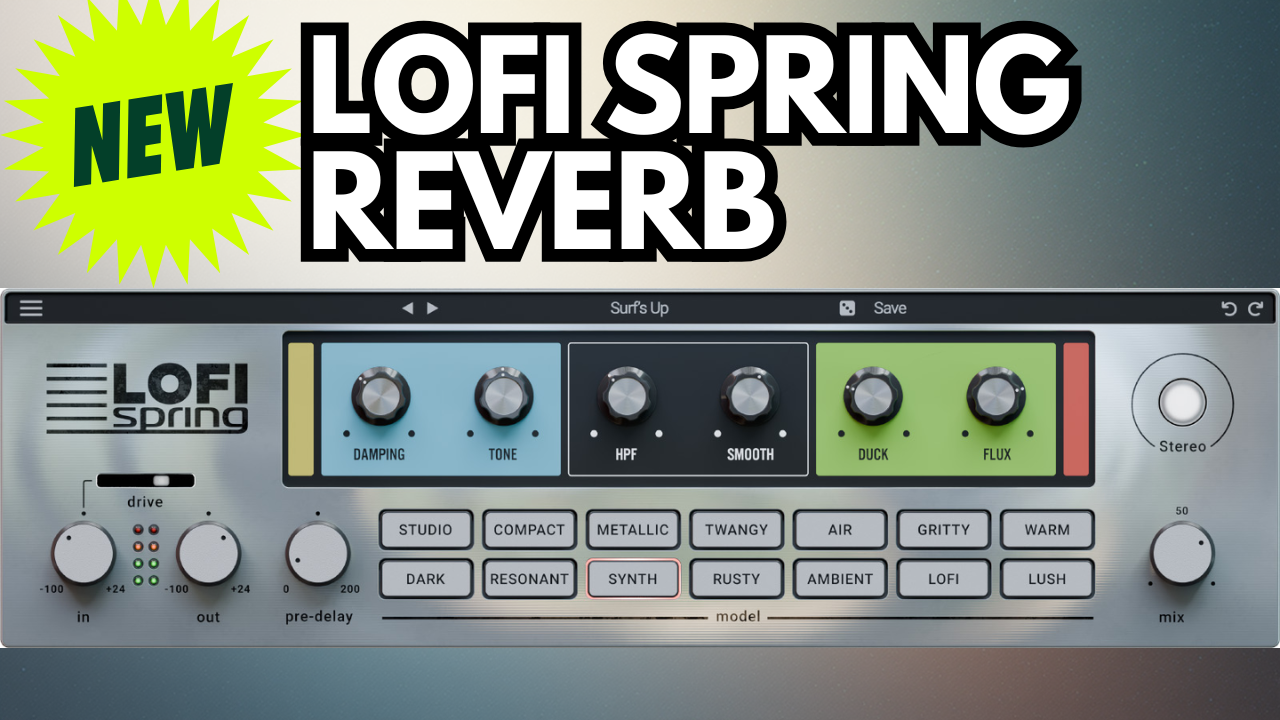The Art Of Lyric Writing: Techniques And Strategies
I consider lyric writing a remarkable skill. It merges the precision of language with the emotive force of music. What often goes unnoticed is the bridge it builds between an artist and their audience, forming a connection that can last a lifetime. To me, that’s the beating heart of any memorable song.
Crafting lyrics isn’t just about stitching words together. It requires a nuanced blend of creativity, technical know-how, and an understanding of human emotion. Whether it’s a chart-topping hit or a deep-cut track, the most resonant lines often echo the collective feelings of their listeners.
In my journey as a writer, I’ve recognized that lyric writing calls for more than a pen and the love of music. It demands an intimacy with words and an ear for rhythm. To thrive in this art, you need a keen eye for detail, an open heart for storytelling, and the courage to express what’s often left unsaid.
This article invites you on a path to mastering the art of lyric writing. From uncovering inspiration to refining your final draft, expect practical advice that will hone your technique and strategy. So, as the next section unfolds, we’ll explore how to ignite the creative spark that is pivotal for composing lyrics that resonate.
Related Posts:
- Finding The Right Collaborators
- Experimental Songwriting Techniques You Will Love
- How AI Is Revolutionizing The Songwriting Process
Inspiration and Conceptualization
I’ve always believed that the heart of a memorable song lies in its lyrics. It’s the narrative and the punch of emotion in every verse that makes a tune latch onto your memory. But where do these narratives begin? The answer is simple: inspiration. And finding it? That’s an art in itself.

Inspiration for lyrics can come from anywhere. A sunset might not just be a sunset, but a metaphor for closure or loss. The chatter at a cafe could unravel into a storyline about life’s hustle. Inspiration is about opening all your senses to the world around you. Be present, observe and let everything you see, hear, and feel become a potential seed for your lyrics.
Once the seed of an idea takes root, it needs to be nurtured into a strong concept or theme for your song. This could mean dwelling on a specific emotion, a particular incident, or a universal truth. Thematic clarity is imperative; it gives your song direction and purpose.
How do you capture these ephemeral bursts of inspiration? Keep a journal. Scribble down thoughts, conversations, even overheard snippets that resonate with you. This practice creates a reservoir of ideas from which you can draw when the time comes to pen new lyrics.
And remember, inspiration isn’t always grandiose. Sometimes, the most powerful song concepts are those that speak of mundane realities in profound ways. It’s not just about WHAT you say but HOW you say it. The trick is to turn the ordinary into the extraordinary through your words.
Mastering Rhyme and Rhythm: The Structural Elements
A song’s heartbeat is its rhythm, and the glue that holds it together is its rhyme. You can’t overlook the importance of mastering these two elements. They don’t just give your song structure, but they make your lyrics memorable and impactful.
Regarding rhymes, they can serve as anchors, making your song easy to remember and sing along to. Rhyme schemes can be as straightforward as an ‘ABAB’ pattern, or more complex, using near-rhymes or multi-syllable rhymes to add sophistication to your lyrics. A strong rhyme evokes a sense of completion and resolves tension in your verses.
Rhythm, or the pattern of beats in your lyrics, is equally important. It’s the pulse of your song that gives the words flow and musicality. Matching the natural accents of the language to the beat creates a rhythm that feels effortless and catchy.
To use these structural elements effectively, start by simply reading your lyrics out loud. Pay attention to where you naturally want to place emphasis. If the natural emphasis doesn’t fall where it sounds good with the music, consider revising for a better fit. Experiment with different syllable counts and stress patterns until the words feel right with the music.
And remember, breaking the rules occasionally can make your song stand out. Don’t be afraid to play with irregular patterns or unusual rhyme schemes if it serves your song. PRACTICE makes perfect, and as you write more, you’ll develop a feel for what works best.
The Power of Imagery and Metaphors in Songwriting
Compelling lyric writing often hinges on the use of vivid imagery and metaphors. I’ll explain why these elements are so critical and how they can transform a simple song into an unforgettable experience.

Imagery in lyrics serves as a paintbrush for the songwriter, allowing them to create scenes and scenarios that listeners can visualize. It’s not just about telling the audience what’s happening; it’s about showing them. To achieve this, I focus on sensory language that taps into sight, sound, taste, touch, and smell.
Metaphors and similes come into play when I want to add emotional depth to my songs. They are the shortcuts to the listeners’ hearts and minds, drawing parallels that forge a deeper understanding. A well-placed metaphor can resonate with experiences or feelings familiar to the audience, making the song more memorable and impactful.
I stress the importance of balance when using these literary devices. It’s tempting to pack a song with elaborate metaphors, but if used too frequently, they can obscure the message. The key is to weave them in naturally, ensuring the story and emotions of the song still shine through.
Now, let’s pivot to how we build on these techniques to create a compelling story within our lyrics. Storytelling is another pillar of effective lyric writing, seamlessly blending with imagery and metaphor to craft an evocative narrative.
Storytelling Through Lyrics
I often find that the heart of many unforgettable songs lies in the story they tell. Storytelling through lyrics isn’t merely about relaying events; it’s about crafting a journey that listeners can immerse themselves in. When I create a narrative within my lyrics, I strive to construct a compelling progression of events that resonate on a personal and universal level.

To weave an effective story in song, I focus on a few core principles. Firstly, setting the scene is crucial. I introduce characters, locations, and situations that listeners can visualize and connect with. This establishes a foundation for the unfolding narrative. Then, I progress the story by introducing conflict or tension, which drives the narrative forward and maintains listener interest.
I also pay close attention to the structure of my verses. Each verse should ideally serve as a chapter in the story, with the chorus acting as a recurring theme or message that ties the narrative together. I find it important to ensure that there is a clear beginning, middle, and end, much like in traditional storytelling formats.
Striking the right balance between personal anecdotes and universal themes is a delicate art. Drawing from my own life experiences lends authenticity to the lyrics, but I also aim to tap into emotions and situations that many people can relate to. This allows the narrative to be both intimate and widely accessible.
In the transition to the next session, storytelling through lyrics often sets up the stage for conversational elements to shine. The narrative I build serves as the perfect backdrop for employing a more direct, colloquial expression to achieve an authentic connection with my audience.
Conversational Lyrics
As a writer, one of my missions is to bring a sense of realism into my lyrics. It’s about making sure the song speaks to the listener as if I’m right there with them, sharing a moment. Crafting conversational lyrics is an art that requires more than just wordplay – it demands authenticity. Songs that nail this truly resonate, and they have the power to feel like a friend sharing a secret or a story.

Now, why do we gravitate towards conversational lyrics? When you strip away the grandeur, you allow the raw, genuine emotion to take center stage. It’s the difference between an elaborate monologue and a heart-to-heart chat over coffee. Listeners want to see their own reflections, their spoken truths in the music they turn to. That’s where the magic of conversational lyrics shines – they connect, they comfort, and they stay with you long after the song is over.
Navigating this writing style does come with its challenges, though. Avoiding cliches while maintaining the ‘feel’ of spoken language can be a tightrope walk. And there’s also the task of ensuring your lyrics don’t fall flat without the support of complex literary devices. My approach? Keep it simple and sincere. Tap into everyday conversations, observe the ebb and flow, and transpose that onto paper.
I like to think of conversational lyrics as the songwriter’s handshake. It’s warm, inviting, and personal. So, to craft lyrics that talk ‘with’ the listener instead of ‘at’ them, I focus on these elements: the choice of words reflective of daily speech, the rhythm mimicking natural cadences, and themes that strike a chord with daily experiences.
Moving forward, I keep these conversational threads in mind as I explore wordplay and creative language tools in the next section. While conversation keeps things relatable, creative use of language ensures that my lyrics stand out and remain engaging without sacrificing their genuine feel.
Wordplay and Creative Language Techniques
Injecting wordplay into your lyrics can turn a simple song into an unforgettable listening experience. The clever use of language not only engages listeners but also adds layers of meaning to your songs. Let’s dive into the tools of the trade.

Wordplay encompasses various linguistic tools, such as puns, double entendres, and other figures of speech. These devices challenge the listener’s intellect and can imbue your lyrics with wit and character. When I use puns or wordplay, I make sure they serve the song’s message rather than just show off my vocabulary.
Alliteration, assonance, and consonance are musicality’s linguistic cousins. Alliteration happens when you use the same consonant sound at the start of closely connected words, like ‘She sells seashells by the seashore.’ It’s a technique that can amplify your song’s rhythm and mood. On the other hand, assonance, the repetition of vowel sounds, can add a lyrical softness or harshness, depending on your choice of sounds.
Consonance, the repetition of consonant sounds, typically at the end of words, also contributes to the musical quality of lyrics. Think about how the repetitive ‘t’ sound in ‘Don’t doubt the thrilling thud of thunder’ adds to the auditory experience. It’s quite powerful when done right.
Creative language sets your lyrics apart. Metaphorical language, for example, when I use it well, can weave complex emotions and abstract thoughts into a fabric that listeners can feel and interpret.
Incorporating wordplay and creative language techniques is all about balance. Overdoing it can make lyrics feel forced or overly complex. Always remember why you’re writing the song in the first place—to connect with your listener. This ensures wordplay enhances rather than eclipses the message.
Editing and Refining: The Art of Revision
I’ve walked you through the cascading thrill of lyric writing – from the spark of an idea to the playful dance of words. Now I turn to an equally critical stage, often overlooked – editing and refining your lyrics. Songwriting isn’t completed in one go; it’s an iterative process. Think of it as sculpting: you have a raw block of marble that you chisel and polish until the details of your masterpiece emerge.
Start by reviewing your lyrics with FRESH EYES. Put them aside for a day or two, then come back to them. You’ll be amazed at what stands out – lines that lack clarity, forced rhymes, or a chorus that could pack more punch.
CRITIQUE is key. Approach your lyrics objectively. Ask yourself if each line serves the purpose of the song and ties back to your core theme. Is there a better word to convey a feeling? Can the flow of a verse be improved?
Incorporate FEEDBACK from people whose opinions you trust. Often, a fresh perspective can shed light on areas you may have missed and provide valuable insights. Always remember, though, final decisions rest with you – after all, it’s your artistic expression.
Lastly, don’t rush the process. QUALITY trumps speed. Lyric writing isn’t a race; it’s an art form that requires patience and persistence. Aim for lyrics that resonate, that stand the test of time, and most importantly, that are authentic to you as an artist.
Related Posts:




Leave a Reply